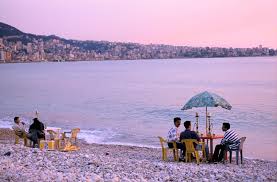Current Situation in Lebanon: Challenges and Prospects

Introduction
The current situation in Lebanon is a critical issue not just for its citizens but also for the broader Middle East region. Lebanon has been grappling with severe economic, political, and social challenges for the past few years, and understanding these issues is essential for grasping their implications on regional stability and international relations.
Political Landscape
Since the 2019 protests ignited calls for reform, Lebanon has been in a state of political turmoil. The resignation of Prime Minister Saad Hariri, followed by the appointment of Najib Mikati, has not resulted in significant improvements. A parliamentary deadlock persists, exacerbating the country’s governance issues. The political factions continue to be mired in corruption allegations, further alienating citizens and prompting many to leave the country in search of better opportunities.
Economic Crisis
Lebanon’s economic situation remains dire, ranked among the top ten worldwide in terms of its GDP decline. The local currency has lost more than 90% of its value against the US dollar, leading to hyperinflation and skyrocketing prices of essential goods. According to the World Bank, about 78% of the population now lives in poverty, and the unemployment rate remains high. In response to this crisis, international organizations have called for reforms and transparency in government spending, though progress has been slow.
Humanitarian Issues
The ongoing crises have led to a significant humanitarian challenge. As millions struggle with food insecurity and lack access to healthcare, the situation is worsening due to the compounded effects of the COVID-19 pandemic. NGOs and various international agencies are mobilizing to provide relief, but their efforts are often restricted by bureaucratic hurdles and funding shortages.
International Relations
Lebanon’s geopolitical positioning has made it a focal point for international interests. The country’s alliances and conflicts impact regional stability and influence global powers. The recent negotiations related to maritime boundaries with Israel, for instance, showcase Lebanon’s complex relationship with both its neighbors and international stakeholders. These dealings could pave the way for economic recovery, contingent upon political stability.
Conclusion
The challenges faced by Lebanon are multifaceted and deeply rooted in its political and economic framework. As the country navigates these turbulent times, its future hinges on the willingness of local leaders to implement genuine reforms. International support, contingent on these changes, may offer a ray of hope for the struggling nation. For readers, the situation in Lebanon requires attention as it represents broader themes of governance, economic stability, and humanitarian rights that resonate around the globe.









